San Marco, or St Mark of Alexandria, is the patron saint of Venice.
It wasn’t always so.
In the very earliest times of the Venetian state, their patron saint was San Todaro (San Teodoro or St Theodore), from the Eastern Roman Empire.
San Marco only became the protector of Venice in 828.
St Mark of Alexandria
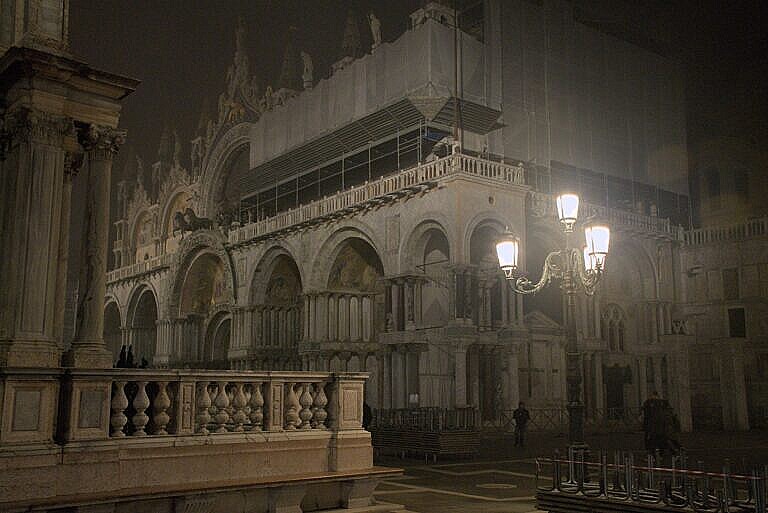
Like with all early saints, facts and legend are indistinguishable.
Mark was born in the Levant, either in Palestine or Cyprus, around 20 BCE. He was one of the early converts to Christianity, taught by Paul and later Peter.
It appears he travelled to Rome with Peter, but later he ended up in Alexandria in Egypt, where he founded what is today the Coptic Orthodox Church in 42 CE. He served as the first bishop or Patriarch of Alexandria.
Mark is also the author of the Gospel of Mark.
He died in the second half of the first century and was buried in Alexandria.
The relics
The remains of Saint Mark stayed undisturbed in Alexandria for over seven hundred years.
Egypt was for much of that time firmly Christian, under the Patriarchy of Alexandria, headed by the successors of St Mark.
However, in the 640s, Arab invaders conquered Egypt. The new rulers saw the worship of relics of saints as a kind of idolatry, and consequently destroyed many relics whenever they got the chance.
Buono and Rustico
Two Venetian merchants, Buono from Malamocco and Rustico from Torcello, travelled to Alexandria in 828. There they somehow got hold of the relics of the saint.
It is a story with several versions. In some, the two bought the relics from the monks of the monastery. In others, the monks gave the bones to the Venetians for safekeeping because the monks were afraid the Muslim rulers would have them destroyed. Yet other versions say the merchants went to the monastery by night to steal the relics.
Whichever version one believes, the box with the earthly remains of the evangelist ended in the hands of the two Venetians, who wanted to bring them to Venice.
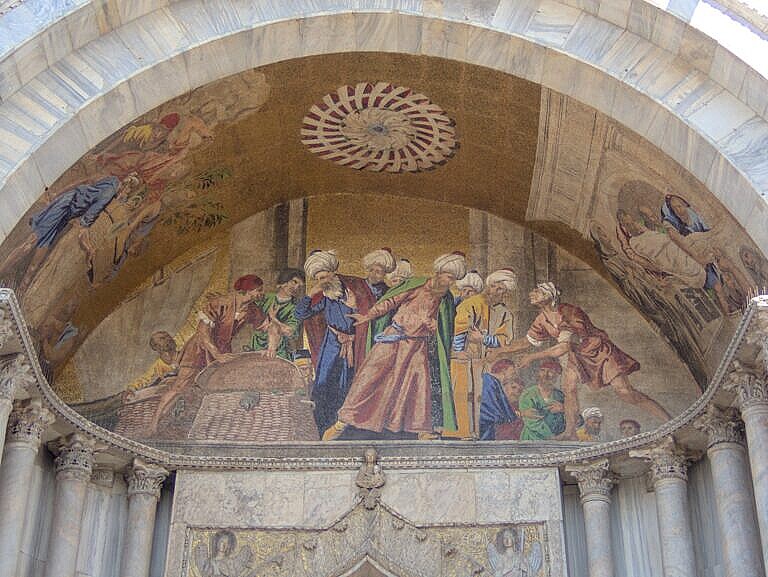
However, the Muslim authorities knew just as well as the Venetians how much those relics were worth, so the two merchants couldn’t just walk away with the treasure.
They had to get through customs without being discovered.
When the Muslim soldiers went through the cargo of the ship before departure from Alexandria, to control that the merchants had paid all duties and taxes, they came to a chest with the hidden box inside. They opened it, and immediately shied away in disgust.
They didn’t check the contents of the chest any further.
The chest was full of salted pork, provisions for the long journey at sea, but underneath Buono and Rustico had hidden the box with the bones of Saint Mark. That way, they managed to get the treasure through customs and back to Venice.
San Marco in Venice

When the ship arrived in Venice, the two merchants handed the relics over to the doge and the patriarch.
St Mark of Alexandria was a far more powerful protector than San Todaro, and the Venetians immediately adopted him as their new patron saint.
In 832, they consecrated a new chapel to San Marco alongside the already existing chapel to San Todaro besides the doge’s palace, and the relics hidden inside.
The Venetians replaced both chapels in 978 with a larger church just for San Marco. They replaced that again in 1094 with the current basilica.
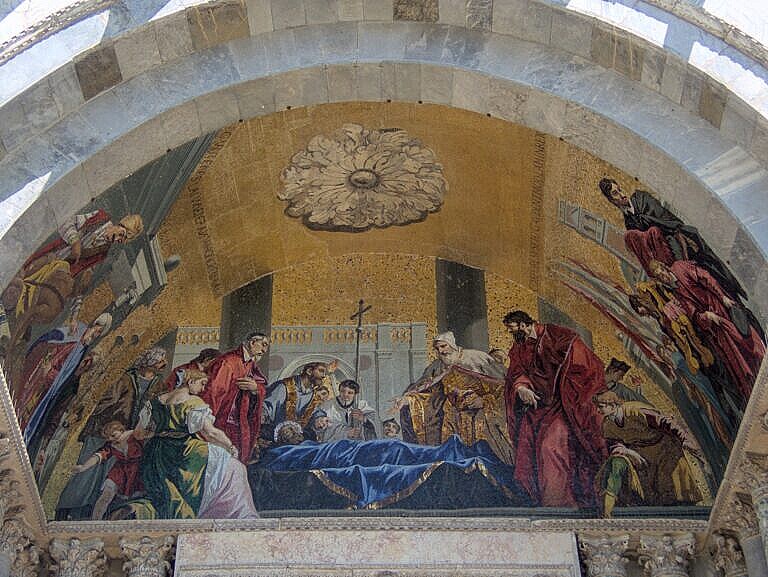
In the process of enlarging and rebuilding the churches, the bones went missing. At the inauguration of the new church on April 25th, 1094, nobody knew where they were.
Then a miracle happened, as they do.
During the inaugural mass, a marble block in a column suddenly cracked and fell to the floor, and revealed the box with the bones of the saint in a cavity of the column.
The economic importance of San Marco
The relics of Saint Mark weren’t just of religious importance. They were an major economic asset for the city of Venice.
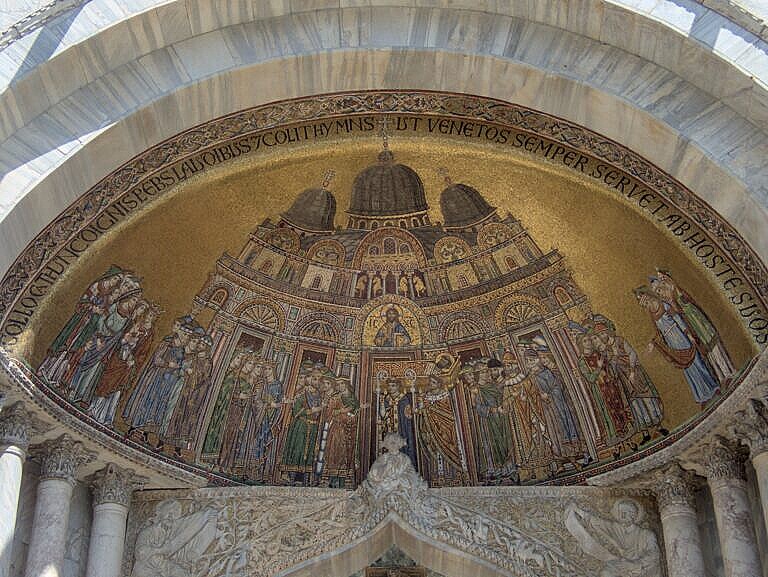
In the Middle Ages, long-distance travel was dangerous, slow and expensive. There were only really two common reasons for travelling to faraway places: commerce and pilgrimages. To make money, and to be forgiven one’s sins.
The business side of pilgrimages was the main reason for the constant moving of relics around. The Arab conquest of much of the Levant in the 600s and 700s brought numerous relics to Western Europe. St Nicholas, St Lucy and St Christina all came to Venice from the east because they weren’t safe in the east any more.
The presence of the remains of St Mark in Venice meant that plenty of pilgrims from much of Europe would come there, and in the process spend money.
San Marco and Venetian identity
For almost a thousand years after the arrival in Venice of the relics of St Mark. The Venetians ascribed much of what went well for Venice to San Marco. He was the divine protector of the Serenissima.
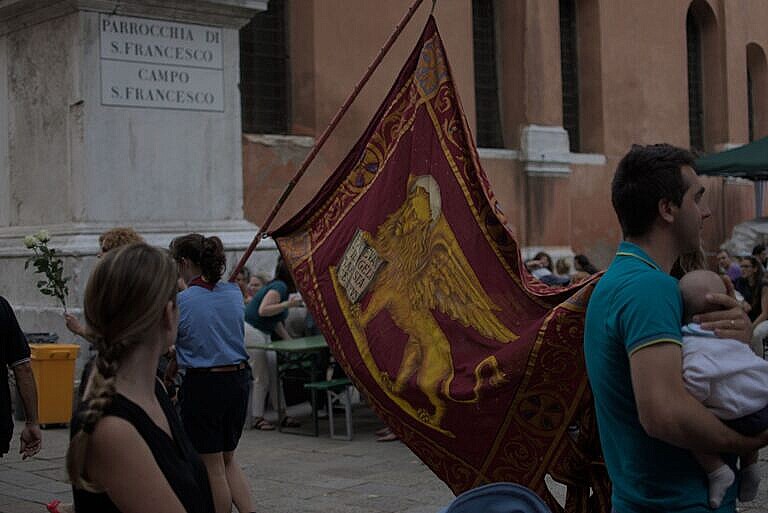
San Marco was invoked constantly, to a point where his symbols as an evangelist, the winged lion, became equally a symbol of Venice.
The winged lion is on the Venetian flag, the gonfalone. Every public building was, and often still is, adorned by a relief or statue of a winged lion.
After the end of the Venetian republic, the symbology continued in local government. The Municipality of Venice still uses the winged lion as its symbol.
To this day, whenever there’s some kind of public celebration, the cry is Viva San Marco! — Long live St Mark!
The meaning is “Long live Venice!” but St Mark, his symbol the winged lion and the state and city of Venice have been conflated for over a millennium, and by now they’re indistinguishable.
The feast of St Mark is on April 25th, which has been celebrated in Venice ever since 828. It is now also Liberation Day, a national holiday.

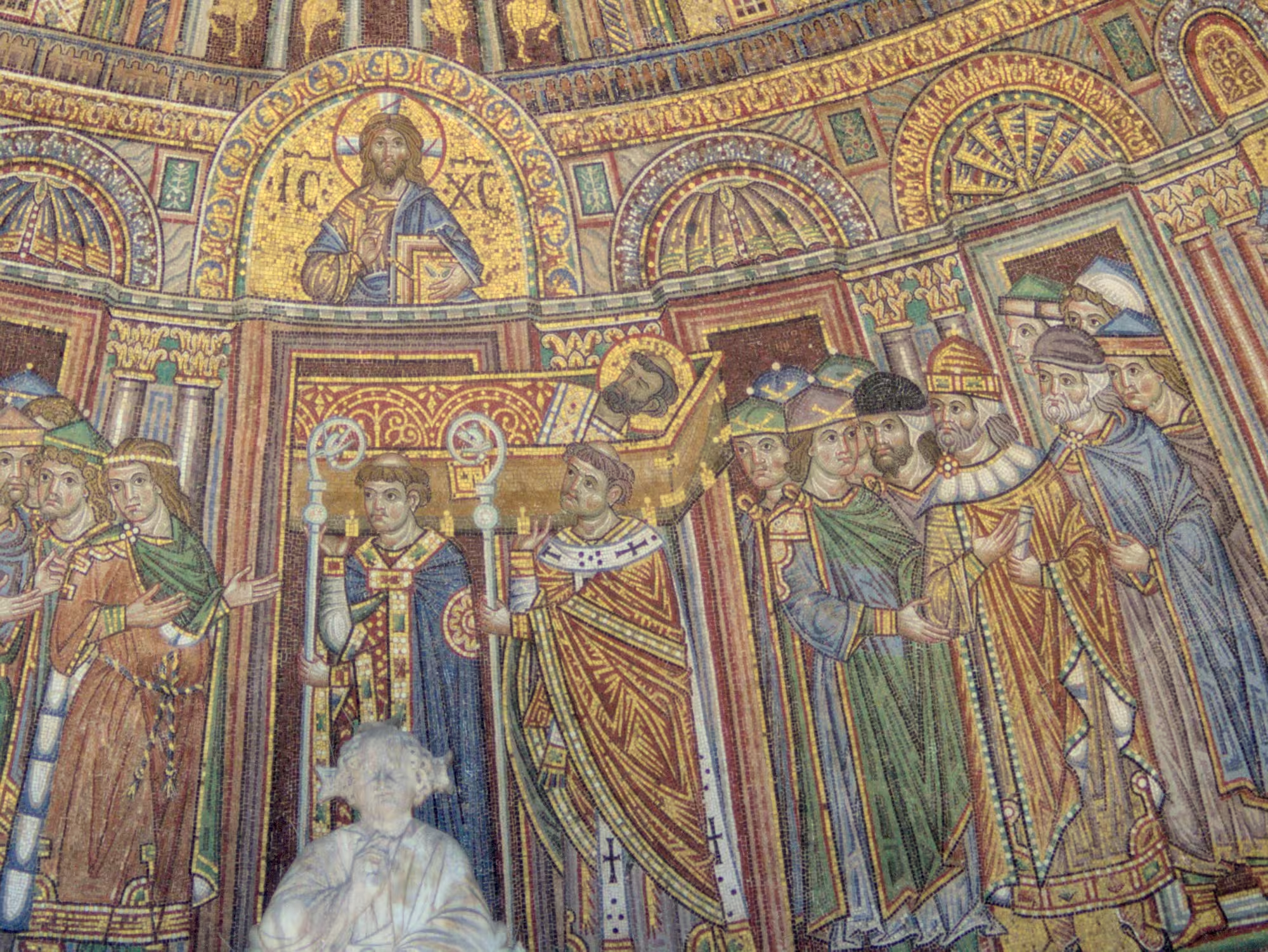
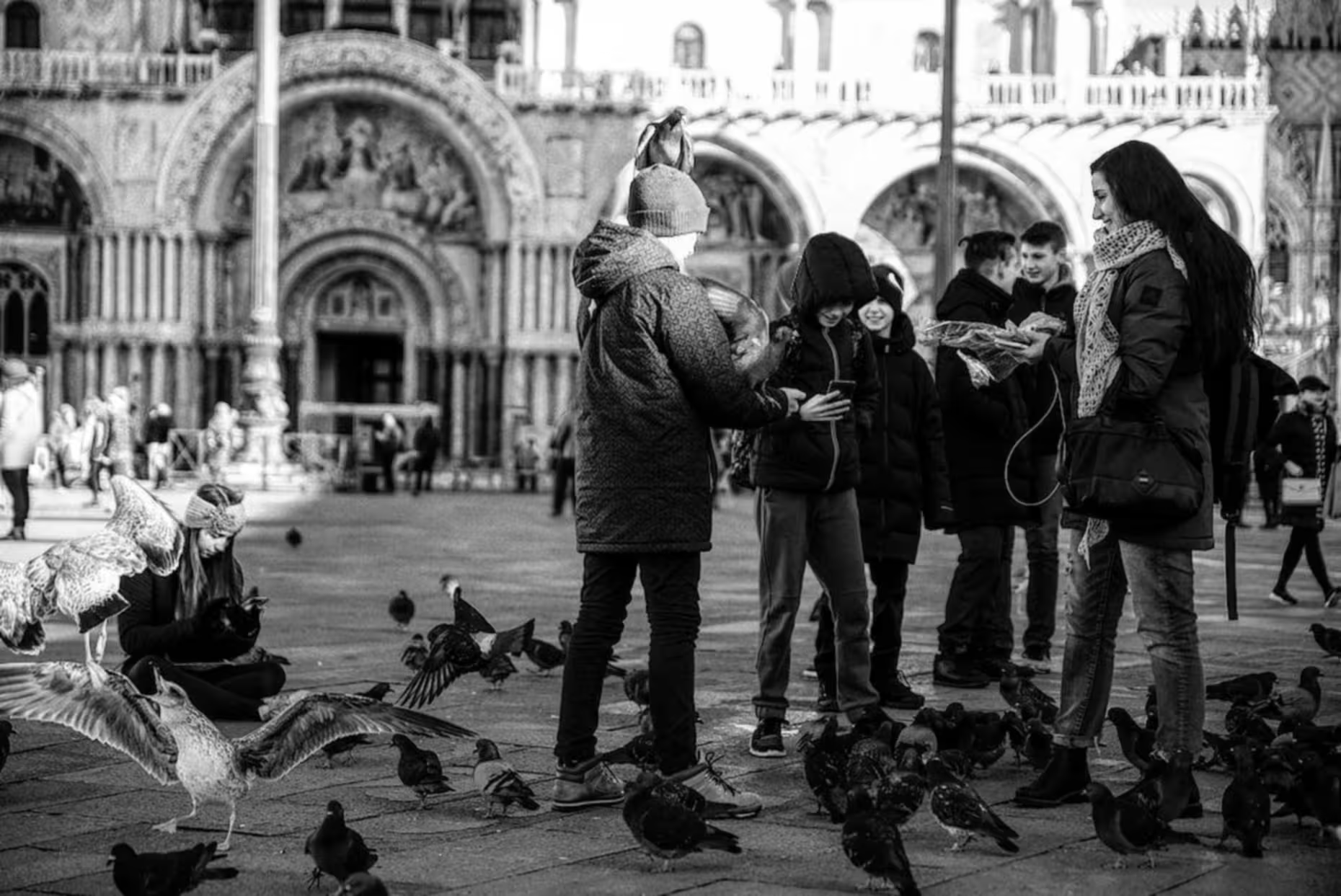

Leave a Reply